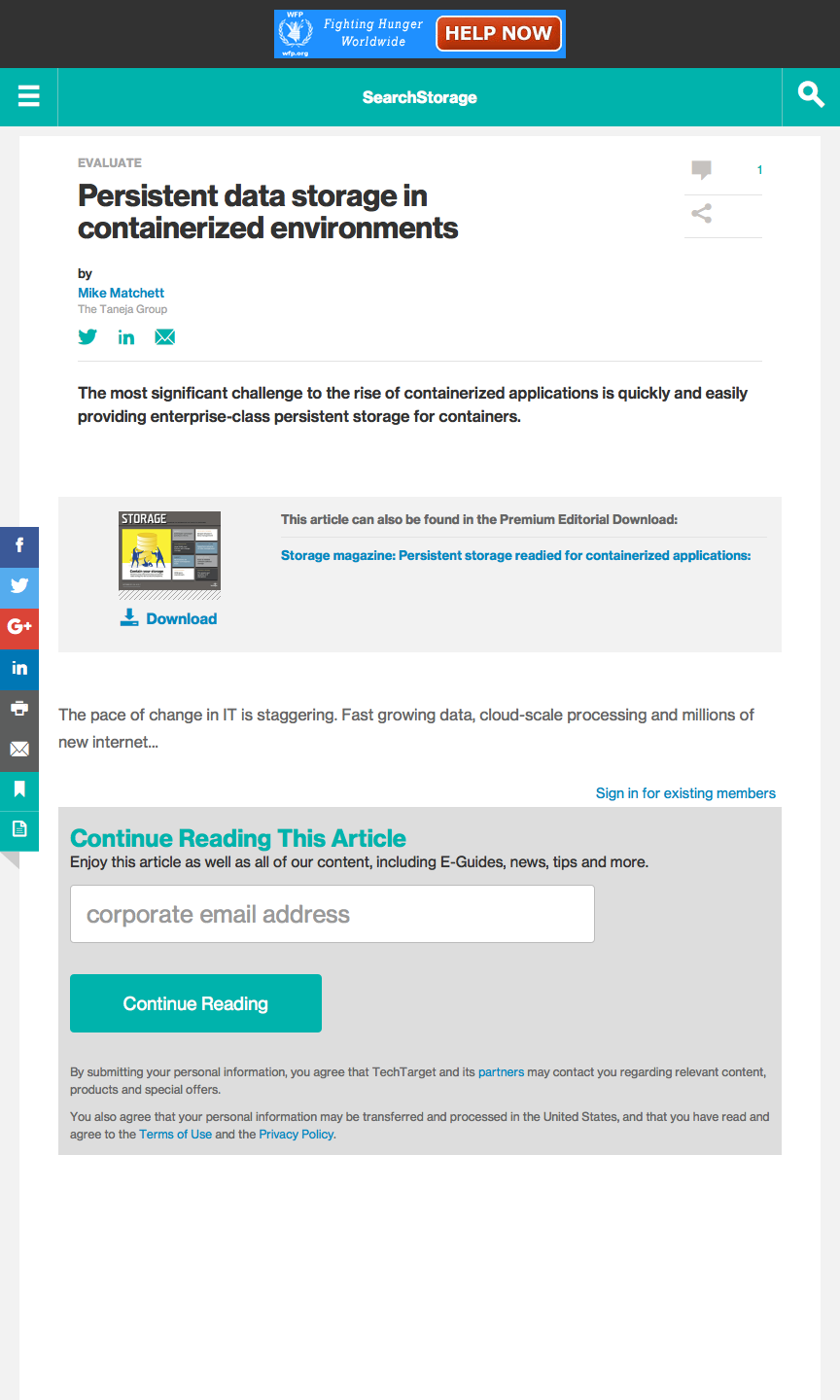Persistent data storage in containerized environments

An IT industry analyst article published by SearchStorage.
 The most significant challenge to the rise of containerized applications is quickly and easily providing enterprise-class persistent storage for containers.
The most significant challenge to the rise of containerized applications is quickly and easily providing enterprise-class persistent storage for containers.
Mike Matchett
The pace of change in IT is staggering. Fast growing data, cloud-scale processing and millions of new internet of things devices are driving us to find more efficient, reliable and scalable ways to keep up. Traditional application architectures are reaching their limits, and we’re scrambling to evaluate the best new approaches for development and deployment. Fortunately, the hottest prospect — containerization — promises to address many, if not all, of these otherwise overwhelming challenges.
In containerized application design, each individual container hosts an isolatable, and separately scalable, processing component of a larger application web of containers. Unlike monolithic application processes of the past, large, containerized applications can consist of hundreds, if not thousands, of related containers. The apps support Agile design, development and deployment methodologies. They can scale readily in production and are ideally suited for hosting in distributed, and even hybrid, cloud infrastructure.
Unfortunately, containers weren’t originally designed to implement full-stack applications or really any application that requires persistent data storage. The original idea for containers was to make it easy to create and deploy stateless microservice application layers on a large scale. Think of microservices as a form of highly agile middleware with conceptually no persistent data storage requirements to worry about.
Persistence in persisting
Because the container approach has delivered great agility, scalability, efficiency and cloud-readiness, and is lower-cost in many cases, people now want to use it for far more than microservices. Container architectures provide such a better way to build modern applications that we see many commercial software and systems vendors transitioning internal development to container form and even deploying them widely, often without explicit end-user or IT awareness. It’s a good bet that most Fortune 1000 companies already host third-party production IT applications in containers, especially inside appliances, converged approaches and purpose-built infrastructure.
It’s a good bet that most Fortune 1000 companies already host third-party container applications within production IT.
You might find large, containerized databases and even storage systems. Still, designing enterprise persistent storage for these applications is a challenge, as containers can come and go and migrate across distributed and hybrid infrastructure. Because data needs to be mastered, protected, regulated and governed, persistent data storage acts in many ways like an anchor, holding containers down and threatening to reduce many of their benefits.
Container architectures need three types of storage…(read the complete as-published article there)
